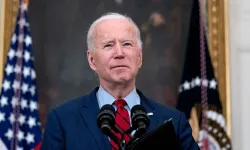According to a study in The Atlantic, the number of campaigns launched for medical purposes in the US in 2020 was 25 times higher than the number of such campaigns in 2011. A total of 200,000 medical spending campaigns were created in 2020.
More than 500 campaigns are currently focused on asking for financial help to treat people, mostly children, with spinal muscular atrophy, a neurodegenerative genetic disease. The gene therapy recently approved by drugmaker Novartis for young children with the disease costs about $2.1 million for a single dose of treatment.
GoFundMe also acknowledges that patients turn to the platform for their medical bills.
Company spokesperson Ari Romio said that "medical expenses" are the most common category of fundraising it hosts. The company estimates that one-third of the funds raised on the site in the past have been health-related.
GoFundMe tends to perpetuate inequalities
But research shows that the way GoFundMe works tends to perpetuate socioeconomic inequalities that affect medical bills or other debts. If you are a celebrity or have a circle of friends with money, your crowdfunding campaign is more likely to succeed.
Rob Solomon, who served as CEO of the platform from 2015 until March 2020 and was named one of Time magazine's 50 most influential people in healthcare, said he "would love to see GoFundMe not have a 'medical' category." He told KFF Health News, "The system is terrible. It needs to be rethought and reformed. Politicians are letting us down. Health companies are letting us down. These are the facts," she said.
According to a 2017 study by the University of Washington, nearly all medical expense campaigns in the US fell short of their goals, with some raising little or no money. The average campaign raised only 40 percent of its target amount, and there is evidence that returns, measured as a percentage of their goals, have gotten worse over time.















